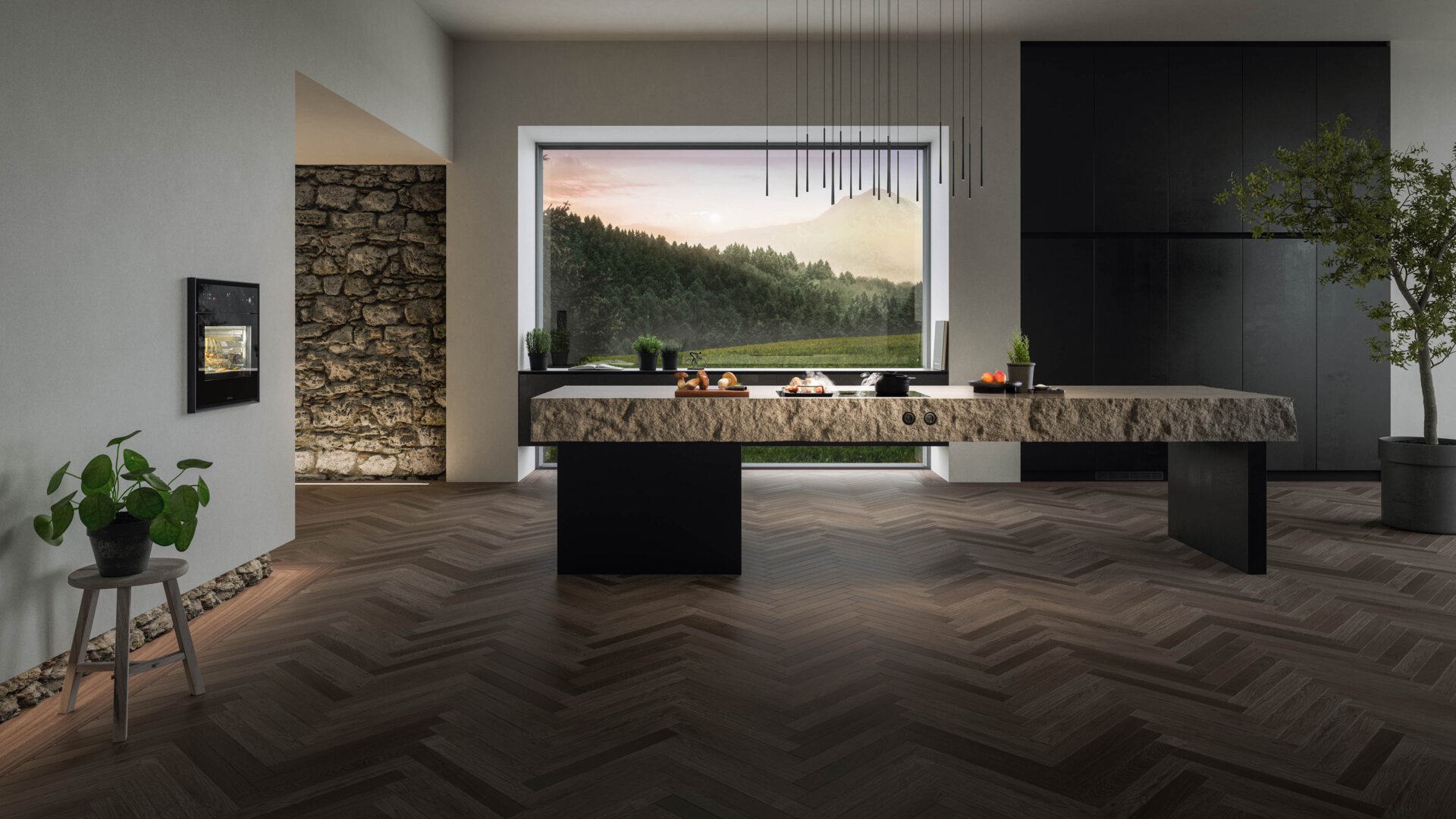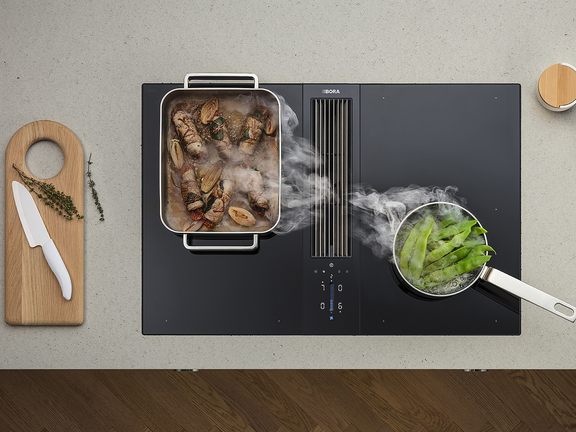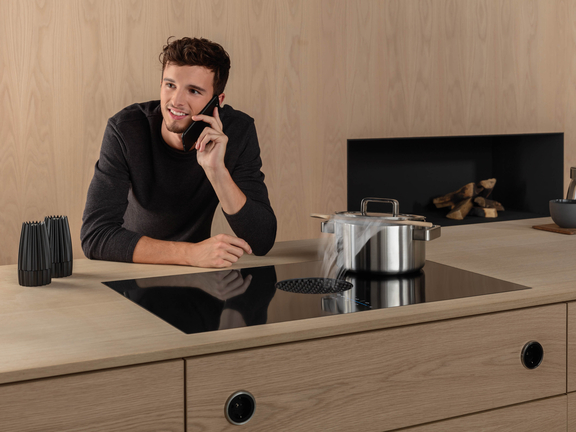

The classic cooker hood is a fixed feature of many kitchens. However, there are innovative alternatives that are not only more visually appealing but also boast impressive functions. Just like the BORA cooktop extractor. Is it best to get a classic cooker hood or go for a cooktop extractor? Our comparison will help you to decide on the right system for you.
What are the pros and cons of cooker hoods? How is a BORA cooktop extractor different? Our comparison summarises the most important features of these systems.
Additional information | Classic cooker hoods | BORA cooktop extractor |
| Design |
| Elegant design, integrated into the cooktop and doesn’t obstruct your view. |
| Range of models | Available in recirculation and exhaust air models. Suitable size for any kitchen. | Available in recirculation and exhaust air models. Different sizes available for different cooking habits. |
| Space requirement | Space needed on the ceiling or wall – this takes up space required for wall units. | Space-saving solution as the extractor is integrated in the cooktop. |
| Volume | Average volume of 63 decibels, equal to that of a conversation. | Quiet operation thanks to sophisticated technology and installation in the kitchen plinth. |
| Extraction performance | Efficient if correctly positioned. The further away from the hob, the more the extraction performance is reduced. | Highly efficient, its placement at the cooktop prevents the release of steam into the room. |
| Cleaning & maintenance | Difficult to clean: surfaces must be cleaned by hand. Grease and activated charcoal filters must be serviced. | Simple cleaning and maintenance: grease filters can be cleaned in the dishwasher. Activated charcoal filters are easy to access for maintenance. |
| Operation | Manual with different levels. Sometimes with remote control. | Intuitive operation at the cooktop. |
| Costs | Large price range, generally less expensive to buy. | Higher purchasing costs. Better value for money in the long term due to lower maintenance requirements |

BORA cooktop extractor systems set new standards in terms of efficiency and design. Modern, minimalist kitchens in particular benefit from the low-key appearance of BORA systems. The cooktop with its integrated extractor blends seamlessly into the overall concept. Experience shows that the air quality in the kitchen is improved by the direct extraction of cooking vapours. In this regard, there is no difference between recirculation and exhaust air systems as both work efficiently.
Induction cooktop, gas cooktop or the popular ceramic hob with radiant heating elements? You can get BORA systems with different types of cooktops. Our configurator will help you to find out which BORA system is most suitable for you.

If you are looking to switch from a classic cooker hood to a BORA cooktop extractor, please bear the following points in mind:
Check that your kitchen has the necessary infrastructure for installation (space, ductwork for exhaust air solutions). BORA systems cannot be retrofitted in just any kitchen without significant modifications.
Whilst a classic cooker hood can be installed by an experienced DIY enthusiast, the installation of a BORA cooktop extractor requires an experienced specialist.
To guarantee optimum performance, BORA systems also require regular cleaning and filter changes.
Instead of the classic cooker hood, the BORA cooktop extractor is a suitable alternative that is available in both recirculation and exhaust air models.
To remove cooking vapours, grease particles and odours from the kitchen, a cooker hood or an alternative like a cooktop extractor is essential. Whether a downdraft extractor – a synonym for the cooktop extractor – or a classic cooker hood, a suitable system needs to be installed to provide fresh air in the kitchen.
No, BORA cooktop extractors are generally quieter as the motor is integrated in the cooktop itself and is soundproofed.
Installation should be carried out by a specialist as there are special requirements in terms of installation and electrical connections.
Technically, yes. As a stand-alone appliance, meaning that the cooktop does not need to be connected to a cooker, a BORA cooktop extractor gives you more leeway when designing your kitchen. If you are renovating your kitchen and want to retrofit a BORA system, you first need to check whether installation is possible and if the system is guaranteed to work.